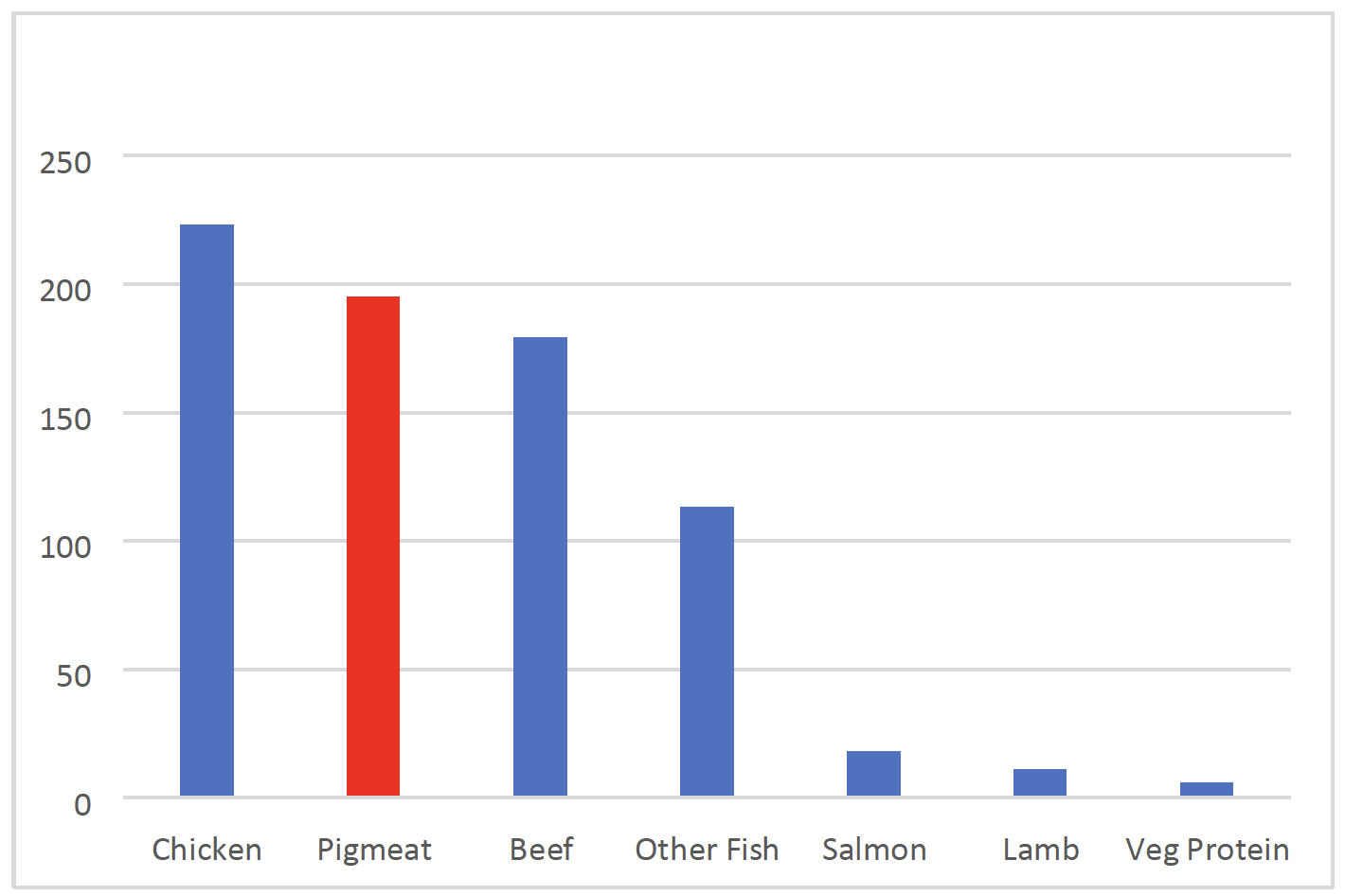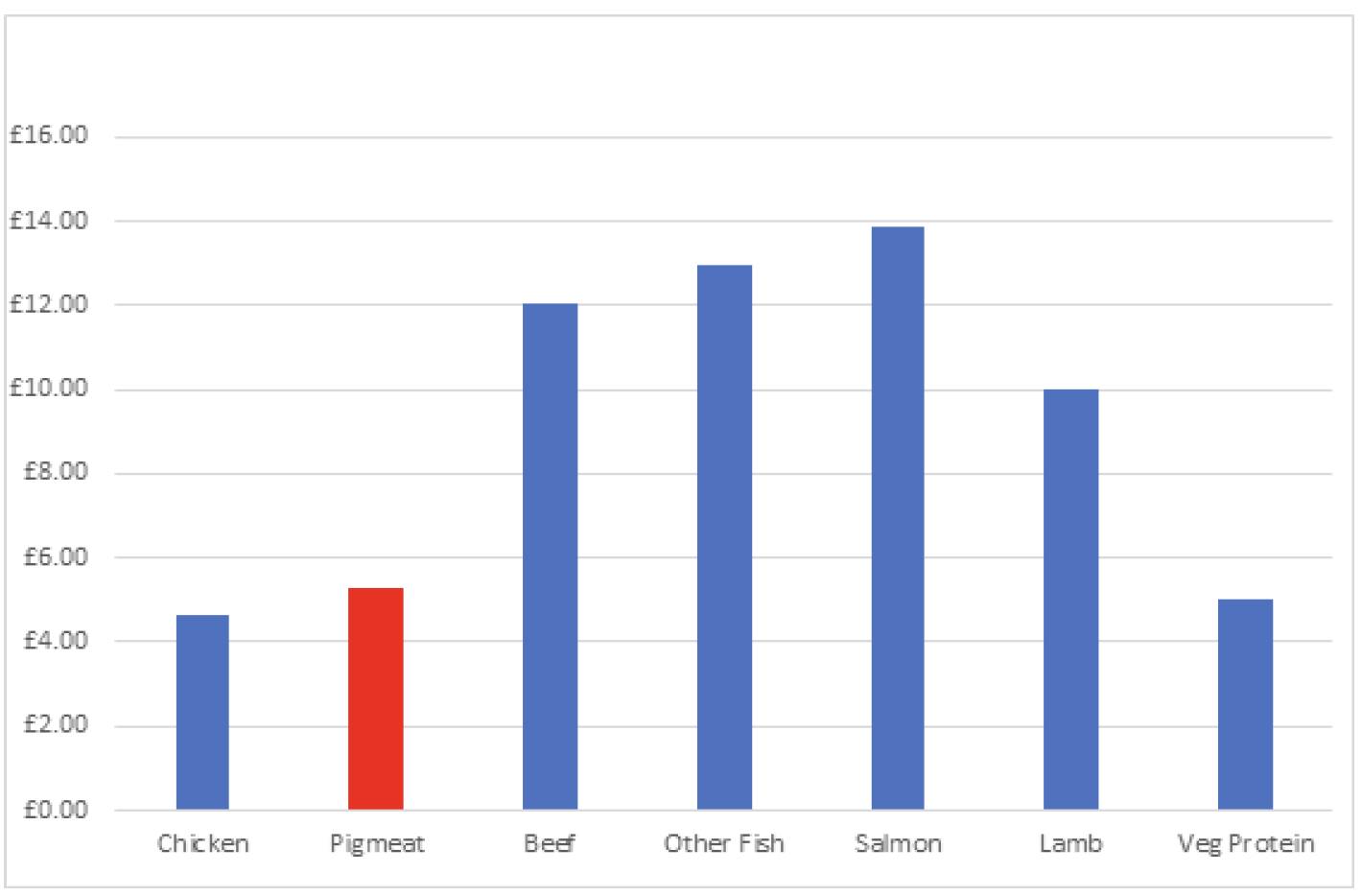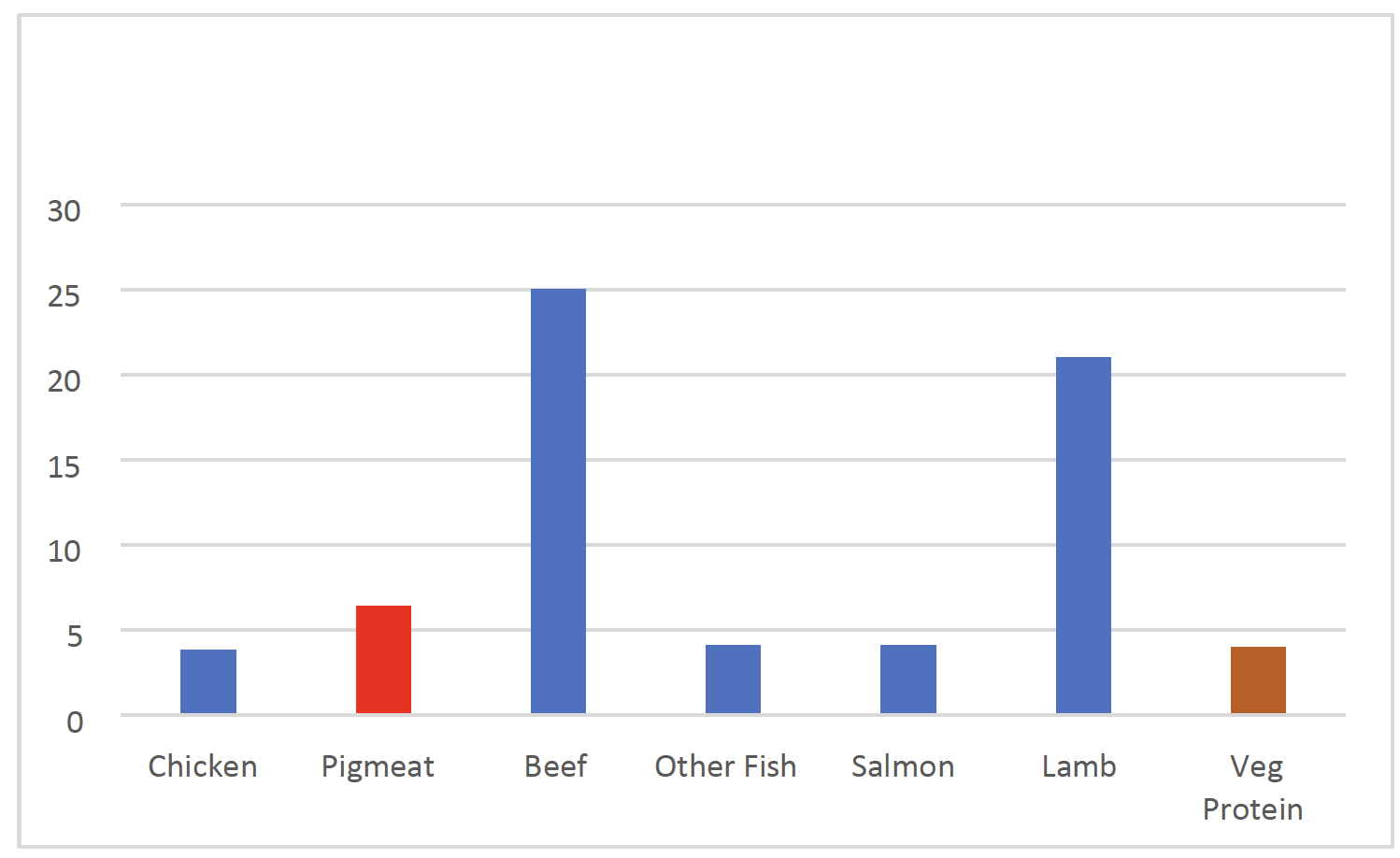Pig sector - reducing greenhouse gas emissions: bringing home the bacon - report
Report from the Scottish Pig Industry Leadership Group, one of the farmer-led groups established to develop advice and proposals for the Scottish Government. It focusses on how to cut emissions and tackle climate change, something that was re-emphasised in the updated Climate Change Plan.
3. Why Pigs Matter to Scotland
Consumption & Affordability
Scottish consumers eat more pigmeat than any other protein apart from chicken:

(DEFRA Household Survey, 2019)
The versatility of pigmeat means that is consumed in a myriad of diverse ways like fresh pork, ham, sausages, pies, and bacon, to name but a few. Furthermore, it is one of the most affordable sources of protein:

(DEFRA Household Survey, 2019)
The Covdi-19 pandemic has demonstrated the appetite for red meat remains, and pork has seen the greatest bounce in retail demand, throughout the lockdown, up 15% year-on-year (Kantar) because of the following market drivers:
- More family meal occasions at home (more sausages/bacon at breakfast/snacks)
- Cooking at home using premium cuts of pork
- Affordability
- Improved cooking skills and a reduction in food waste
- Buying locally with butchers' sales increased
As an accessible, affordable, and healthy source of protein, the advancement of the pork sector with the right environmental credentials will allow producers to be at the forefront of delivering the Scottish Food Policy. This can be achieved through local food chains, public sector procurement, awareness of consumer trends and, most significantly, by providing those facing food poverty with affordable protein.
Dietary Carbon
The Carbon Footprint of pig meat compared to other proteins is shown below:

(University of Lancaster for BBC; SRUC)
The pigmeat figure is the average carbon footprint from 6 Scottish pig farms that used the SRUC AgRECalc tool in 2019 and the Land Use Land Use Change Factor (LULUCF) has been included, even though some of the protein will have been from sustainable sources. All other figures are from the University of Lancaster study. Note that there is no large-scale Scottish source of vegetable protein.
Production Systems
Scotland currently has around 46,000 breeding sows, producing about 1.2m pigs each year. One third are reared and slaughtered in Scotland, whilst the remainder move to England at various ages either as breeding stock or for slaughter. 25,000 sows are in outdoor breeding systems and 21,000 indoors. Nearly all pigs bred from outdoor sows are also kept in sheds from weaning onwards due to the Scottish weather. There are about 100 businesses producing pigs on a commercial scale at 250 different locations, all family businesses apart from one large company.
In 2020, 31,105t of carcase meat were produced in Scotland, which is 19% more than the volume of lamb produced. The total contribution of the pig sector and all associated activities to the Scottish economy is estimated to be £298m.
"Provenance & Profit: A Strategy for Scotland's Pig Industry" was launched in 2018 as part of Ambition 2030, the overall strategy for Scotland's food and drink sector. Positive progress has been made on a number of the objectives, although both Covid-19 and the UK's departure from the EU are currently presenting serious challenges. The overall objective is to double the economic contribution of the pig sector to £500m by 2030. Crucially this can be achieved by increasing the proportion of further processing that takes place in Scotland and by increasing brand value, rather than by having higher production on farm.
This level of output at abattoir level means that the self-sufficiency of Scotland for pigmeat is estimated by Quality Meat Scotland to be only 33%.
Current Government Support
The pig sector currently receives no financial support from Pillar 1. Pig farmers are eligible for certain Pillar 2 schemes, such as the Agricultural Transformation Fund, but have also excluded from several, such as New Entrant Schemes. Pig processors have made use of the Food Processing, Marketing and Collaboration Scheme and industry groups have used the Knowledge Transfer and Innovation Fund. In total, this has all added up to less than £1m per annum over recent years.
Contact
There is a problem
Thanks for your feedback